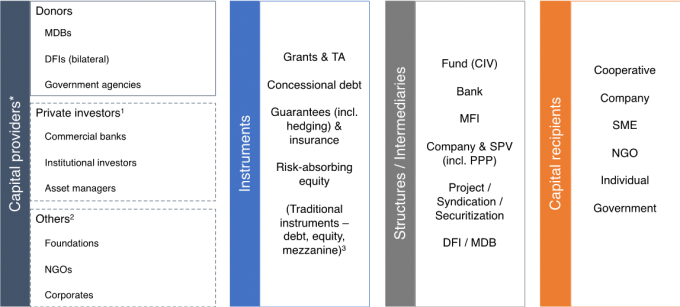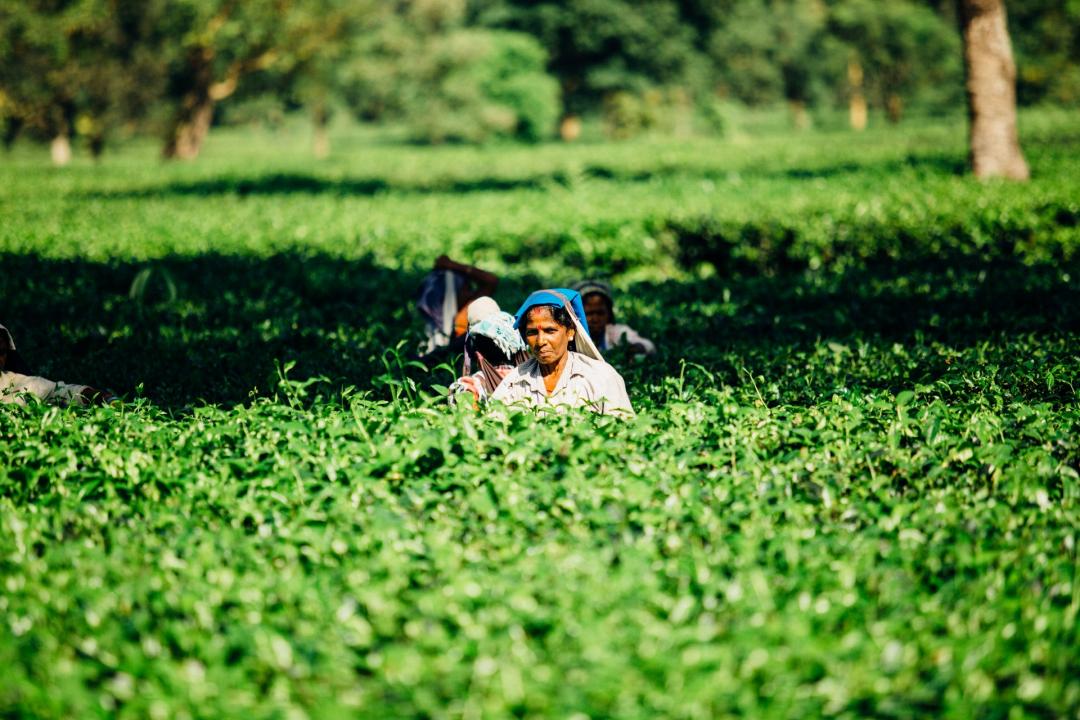Taking a critical look at the role of blended finance in agriculture — an emerging learning agenda
In the Spring of 2018, when SAFIN (the Smallholder and Agri-SME Finance and Investment Network) joined hands with the OECD on a "deep dive" on blended finance and agriculture, I was struck by the mix of enthusiasm and scepticism that this triggered among network partners. While some of us were not immune from the hype around the concept that was spreading in the development finance community, several people pointed out that there was nothing new there, and others were sceptical about the relevance of mainstream definitions of blending to "our" sector.

Since its inception, SAFIN has been motivated to find ways to accelerate progress in meeting the financing gap for agri-SMEs and small farms in developing countries—the latter gap (for small farms only) estimated by the Initiative on Smallholder Finance in 2016 to be around USD 150 billion a year. In this context, our first foray into blended finance came with the opportunity to co-sponsor a study on blended finance in African agriculture in 2017 with the African Development Bank, Alliance for a Green Revolution in Africa (AGRA), and DFID. According to the Dalberg team preparing the report—Blended Finance Tools to Catalyze Investment in Agricultural Value Chains: An Initial Toolbox—blended finance "offers a tantalising prospect of mobilising a substantial amount of the capital needed to support agricultural transformation." The report argued, among other things, the following:
- Agri-food value chains offer exciting business opportunities in many parts of Africa (and indeed, also elsewhere).
- These opportunities cannot be realised without a massive mobilisation of private finance.
- While mobilisation requires action on many fronts, ways to better manage investment risk within financing structures and approaches are needed. Blending covers a range of ways to do precisely that.
The Dalberg report offered elements of a practical "toolbox" for blended initiatives to mobilise finance for agricultural value chains in Africa, drawing upon experiences that appeared successful at least in meeting their financing objectives. At the same time, it cautioned that designing blended finance interventions is "slow, difficult and expensive," that coordination among actors is a key challenge, that market distortion effects can occur, and that a narrow focus on financing matters often prevails, delinked from efforts to address underlying market and policy issues.
After the launch of the SAFIN/OECD deep dive last January in Paris, we built off of the Dalberg report’s conclusions by taking a broader look at the global landscape of blended finance and agriculture with a new report—Blended finance for agriculture—prepared by Tanja Havemann of Clarmondial. The report confirmed the existence of a generic case for blending in the sector, but it cautioned that this needs to be made anew in each context and against specific market failures and risks. It also confirmed the existence of a variety of blended finance approaches in the sector—many of them hardly "innovations"—corresponding to the many roles that development finance can play with respect to commercial finance, value chain finance, or other sources of capital such as farmers' savings. The report proposed the below taxonomy of instruments and structures of blended finance in the sector.

Many approaches to the use of blended finance in the sector (such as blended funds, matching grants, guarantees, and others) have been in use for several years. Among the most "innovative" areas where blending is deployed is the development of securities, which are associated particularly with "green" investments in agriculture, forestry, or other forms of land use, and often sponsored by the Multilateral Development Banks or by private or cooperative banks like BNP Paribas and Rabobank. Also, the emergence of de-risking structures linking public and private capital with a holistic menu of solutions, targeting at the same time finance and value chain coordination is quite innovative. One example of this is the Nigeria Incentive-based Risk-sharing System for Agricultural Lending (NIRSAL), which aims both to de-risk financial investments and to facilitate agribusiness development. It does this with five pillars working simultaneously: a $300 million risk sharing facility, a $30 million insurance facility, a $60 million technical assistance facility, a $10 million holistic bank rating mechanism, and a $100 million mechanism encouraging and rewarding banks for building their capabilities for lending in agriculture. While blending with donor capital was key for this initiative at seed and pilot/testing stage, the model is built for gradual transition to commercial sustainability, which makes it an outlier in blended initiatives in the sector.
Going forward, we envision a deeper analysis of some of these innovative experiences, as well as of some of the more traditional ones. We are particularly interested in experiences that involve national development finance institutions, because of their critical role in local market development, which is in turn critical to address the underlying issues necessitating blended finance as a short-term solution to start with. That said, we remain mindful of challenges and limitations, including those from the perspective of development impact—as outlined in a recent Oxfam paper. To begin with, there are definitional and boundary issues, as much finance flowing in agriculture is value chain based or self-finance, the role of national finance providers is poorly documented, and much international blending that goes to rural SMEs is categorised as "banking and financial inclusion" or "green finance" rather than under agriculture. Secondly, there are major issues around data availability constraining the analysis of evidence on blended finance. Thirdly, it is not clear that blended finance solutions are regularly adopted on the basis of rigorous analyses of specific market failures and consideration of alternatives.
We look forward to continuing this work to understand whether blended finance has a role to play, and on what terms, on access to finance for agri-SMEs and small farms.
Additional Resources:
Inflection Point: Unlocking growth in the era of farmer finance
